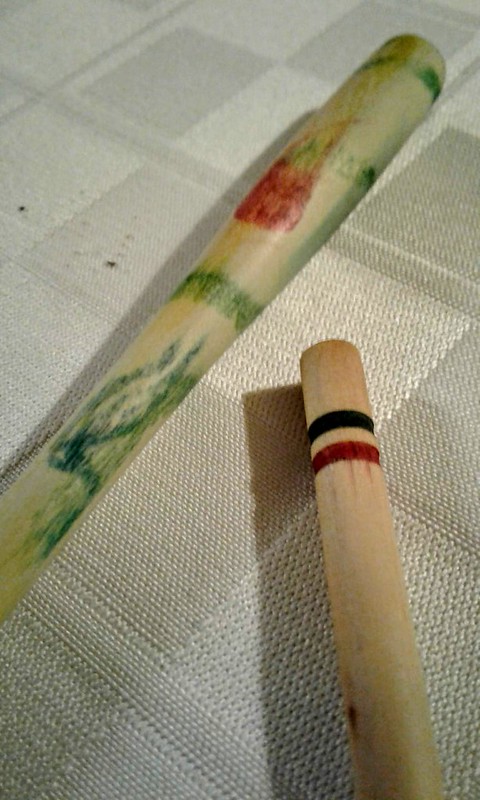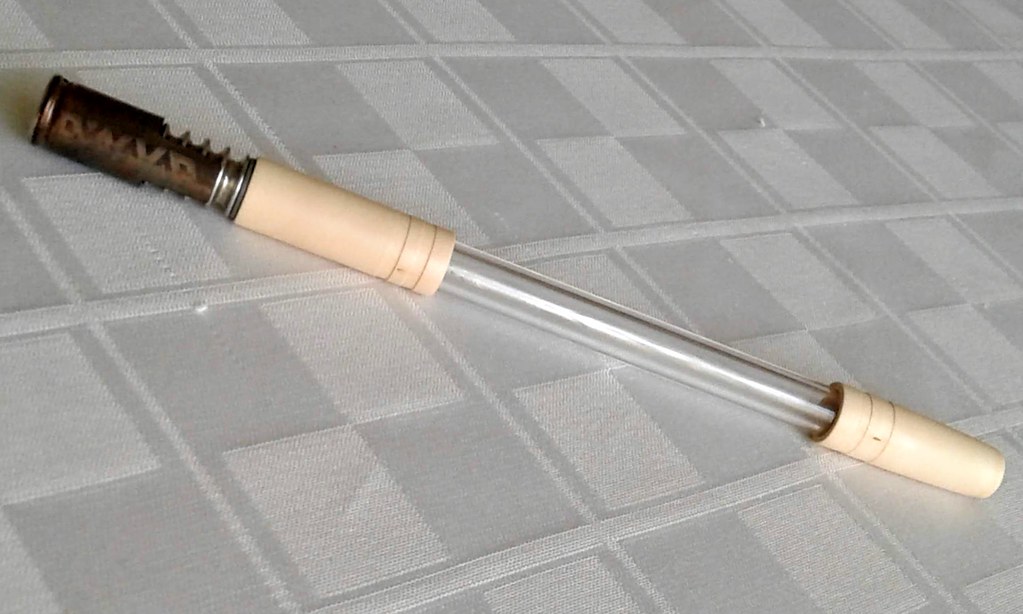TommyDee
Vaporitor
without the 'Y', yes. These shrubs have their lore in ornamental pink flowers on a single yard-long stalk. People come around in late winter/early spring to buy budding stalks for Valentines day IIRC. Mine has been too gnarly to take anything useful from it. That should resolve over the next few years. I need to take it to the ground at some point. For now I'll keep it at 3' for harvesting.
I'm trying to figure out how to make ringlets with pronounced edges. Parting pieces is still on the risky side. I try to get that out of the way early so I know I am running on center based on the core hole. That was an early issue where parting the part would expose asymmetry between the body OD and the core's ID. I let the core hole take on the warp causing this issue. Does that make sense?
And it is still alive this morning. Did several sessions with it yesterday. The thermal profile is not as expected in the least. I have about a 3/8" gap between the VC and the glass. This was not intentional but that was as far as the wood would let me go when it put a death grip on it. The VC receiver gets hot as expected. The glass past the sleeve gets warm. The markings on the wood remain even cooler.
@TheThriftDrifter - I did another little experiment last night. Really dumb on the one hand but science called for it... okay, I was high
Since I replaced the DD for the time being, I cleaned out the honey... black and thick with pollen from keef. And it had a reek! Undeterred I smeared the goo bare-handed onto an older stem. I wiped and smeared and finally buffed it down with the felt on the lathe. Looks gorgeous! Definitely brought out detail the linseed didn't. Its definitely got that well done ABV scent but it is now merging with the Quince, which has very little scent but this is bringing it out. Obviously I can't do this as a finish for you guys but I still believe our distillates and salvaged honey are non-hardening oils with the only quandary being that hemp seed oil is considered a hardening finish. But that certainly doesn't detract from the idea. The risk is that it could do the same as peanut oil and go rancid. For me, that is a risk worth taking for personal pieces. I just can't ship them with a active resins without risking time in jail. So by all means. Even with a linseed base-coat, pick your favorite Resin or Rosin and go to town! Resins should yield some excellent aromas and rosins will make for some nice staining effects. More on this as I move forward. I have a perfect sacrificial waxy orange resin and some very gooey dark sticky rosin. BTW, that honey'd stem is still mostly clear with a stippled texture only in select regions. It gave the wood a little more of an antique style yellowing. Probably the native color of the vape honey. I'll use a much cleaner honey next time. Working hard on building up some in the glass stem
I'm trying to figure out how to make ringlets with pronounced edges. Parting pieces is still on the risky side. I try to get that out of the way early so I know I am running on center based on the core hole. That was an early issue where parting the part would expose asymmetry between the body OD and the core's ID. I let the core hole take on the warp causing this issue. Does that make sense?
And it is still alive this morning. Did several sessions with it yesterday. The thermal profile is not as expected in the least. I have about a 3/8" gap between the VC and the glass. This was not intentional but that was as far as the wood would let me go when it put a death grip on it. The VC receiver gets hot as expected. The glass past the sleeve gets warm. The markings on the wood remain even cooler.
@TheThriftDrifter - I did another little experiment last night. Really dumb on the one hand but science called for it... okay, I was high

Since I replaced the DD for the time being, I cleaned out the honey... black and thick with pollen from keef. And it had a reek! Undeterred I smeared the goo bare-handed onto an older stem. I wiped and smeared and finally buffed it down with the felt on the lathe. Looks gorgeous! Definitely brought out detail the linseed didn't. Its definitely got that well done ABV scent but it is now merging with the Quince, which has very little scent but this is bringing it out. Obviously I can't do this as a finish for you guys but I still believe our distillates and salvaged honey are non-hardening oils with the only quandary being that hemp seed oil is considered a hardening finish. But that certainly doesn't detract from the idea. The risk is that it could do the same as peanut oil and go rancid. For me, that is a risk worth taking for personal pieces. I just can't ship them with a active resins without risking time in jail. So by all means. Even with a linseed base-coat, pick your favorite Resin or Rosin and go to town! Resins should yield some excellent aromas and rosins will make for some nice staining effects. More on this as I move forward. I have a perfect sacrificial waxy orange resin and some very gooey dark sticky rosin. BTW, that honey'd stem is still mostly clear with a stippled texture only in select regions. It gave the wood a little more of an antique style yellowing. Probably the native color of the vape honey. I'll use a much cleaner honey next time. Working hard on building up some in the glass stem

Last edited:










 ...until it clogs.
...until it clogs. I've never really had occasion to work in a group on art-level projects. I can honestly say that is a part of life I am missing out on. Plenty of actual collaboration for real work but never just for fun. Maker spaces are something I fully endorse as a community sponsored activity. These should be as common as libraries. But alas
I've never really had occasion to work in a group on art-level projects. I can honestly say that is a part of life I am missing out on. Plenty of actual collaboration for real work but never just for fun. Maker spaces are something I fully endorse as a community sponsored activity. These should be as common as libraries. But alas  I worry for the youth today. I utilize forums for inspiration but tool and material sharing would be huge!
I worry for the youth today. I utilize forums for inspiration but tool and material sharing would be huge!




 Do you do glass stems?
Do you do glass stems?




